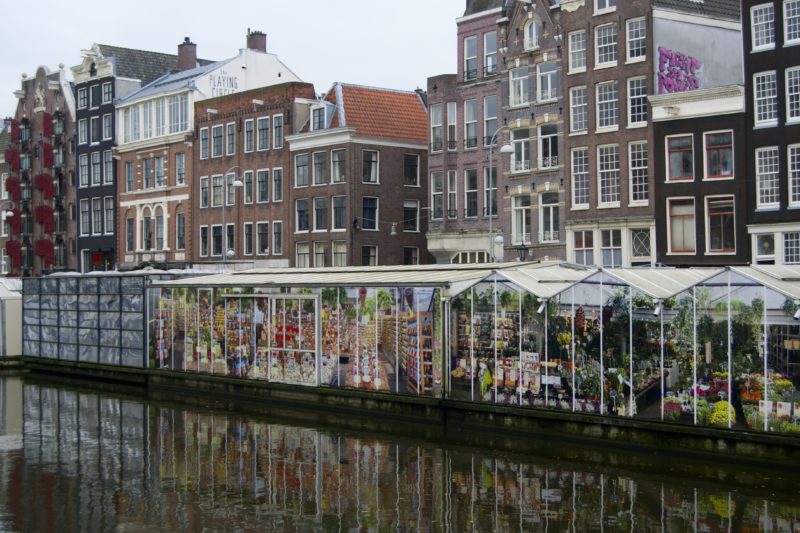In the 1950s and 60s you still had to stop at a checkpoint and show your passport when crossing the border into Holland. But you would have known where one country ends and the next one starts regardless: the houses became skinny and all you had to do was look at the windows. Where a voluminous (and ugly) curtain culture reigned supreme in Germany, the Dutch houses had none. You could (and still can, in many places these days, although curtains are now more frequent,) look straight into the rooms of any given dwelling, often through the apartments themselves into the back gardens.
This is not only my personal observation. Philosophers and researchers have looked into this peculiar part of Dutch culture that gives anyone insight into what you are doing in your living room particularly at dusk when the lights are on inside. There are three main explanations. Everyone agrees it is rooted in the Calvinist history of the country. It showed G-d and your fellow burghers that you had nothing to hide, your behavior impeccable in private as much as in the public sphere.
There is also the theory that the visibility helps social bonding, important in a place so small, with so many people living on top of each other. (16.5 million on 21.094 square miles.) Feeling socially connected as well as exerting a mild form of social control is at the root of a country that has a strong social contract between the well-to-do and the less so, ever since rebuilding from the catastrophic destruction wrought by World War II and the German invasion.
And lastly, the Dutch are curious (Probably one of the traits that made them into such successful sea faring explorers. We’ll pass on the issue of colonialism for today.). They are also heavily into design and happy to show it off to anyone who comes by. So goes the analysis.
Modern Dutch architecture continues that trend of transparency and displayclever design that integrates forms of the old with new ideas. They also, for the most part, acknowledge the scarcity of space and build narrow. Now even printed in 3D!
Sliding doors and built-in furniture save space inside skinny house by Ana Rocha Architecture
If I ever won the lottery, this would be my first purchase………
Charred timber and glass villa by VVKH Architecten is embedded in a sand dune
Photographs from Alkmaar and Amsterdam. Given the limited space, the streets and alleys are accordingly narrow. Here is the Dutch version of our 20 is plenty:
This village wasn’t build for fast traffic.
The song below, 15 million people, was originally an advertisement jingle for the Dutch Postbank. It became a hit a decade or so again on the charts, describing what is seen as typically Dutch. The curtain-less windows being among the listed attributes…. Enjoy.
















Steve Tilden
Ah, Friderike, once again you have taken me on a wonderful journey. I’ve been to Amsterdam and Utrecht, so many years ago, and your daily pictures brought wonderful memories flooding back. Someone said something to some Dutch women recently about their socialized medicine. They replied ‘We prefer civilized.’
Also I was told that the houses are taxed on their width, so everyone builds narrow.
What a wonderful nation.
Lee Musgrave
Mmm . . . I seem to remember that Dutch houses are skinny because their taxes are based on how much ground space a house takes-up (especially at the front of the house), but not on how high it is. As to the lack of curtains, there are many historic Dutch paintings that show the interior of houses with curtains (made, I believe, of fine lace?). So it would be interesting to determine when it became fashionable to not use them).
I always enjoy visiting Holland (and will do so again this Fall), but I could never live there because I’m not comfortable in a place where all the land is flat.